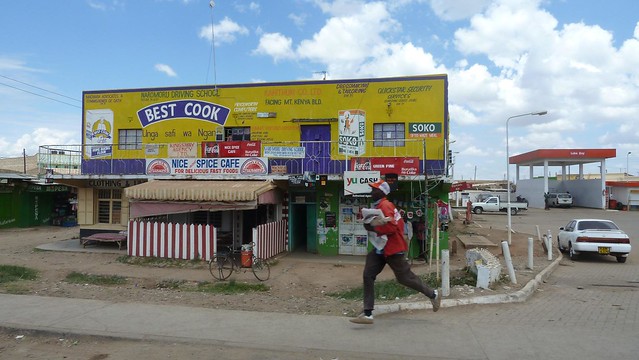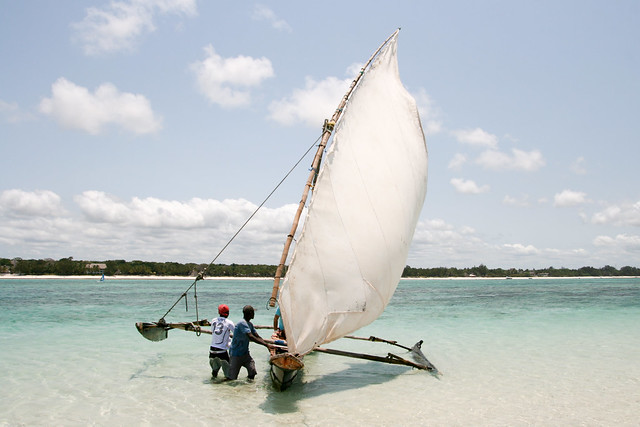An Introduction to Kenya by Rough Guide author Richard Trillo
To introduce our collection of Kenya holidays, safaris and treks we have asked Rough Guide to Kenya author Richard Trillo to give his expert tips on what to do and where to go in this wonderful country. Over to Richard!
On the coast – your entry point if you fly to Kenya by charter flight – it’s the smell that grabs you first, announcing you’ve arrived in the tropics. The rich, warm scent carries notes of pungent mud, charcoal braziers, cow dung, diesel fumes, red dust and spices. When you emerge from Mombasa airport at night, this aromatic air is like a soft, dark blanket, blown on a monsoon breeze, carrying a chirping cricket chorus. It’s an aroma you never forget, perfectly in keeping with the coast’s sultry, historically charged atmosphere.
Up in the highlands, Nairobi airport at dawn paints a much more prosaic picture for visitors arriving on scheduled airlines, but the smell of dung and charcoal is here too, especially after rain. And your other senses are soon being stimulated: you’ve barely picked up your bags and done a double-take at the life-size sculptures of scrap-metal elephants outside the arrivals hall, than you’re glimpsing real big game in Nairobi National Park. Specked with zebras and giraffes, the wild savanna of the park, bordering part of the busy highway into the city, lies just a stone’s throw from thousands of commuters who walk, cycle and jam themselves into shared minibuses for the journey to work. Overhead, huge marabou storks circle on the day’s early thermals, looking for trash to scavenge.
The southern side of the park isn’t fenced, and thus dangerous wildlife and highway billboards advertising mobile phones vie for the attention of Nairobians. When a rogue buffalo was shot by park rangers recently, the story was up on YouTube, captured by onlookers, almost before the same crowd had registered their disappointment that a free beef handout wasn’t on offer.
Striking contradictions like these, setting visceral nature and the struggle for survival against metropolitan life are a Kenyan hallmark and soon become part of your everyday experience while travelling here. For example, in the Rift Valley, an unlikely wooden “internet café”, powered by a solar panel, is guarded by a man wearing an Arsenal T-shirt and carrying a hefty bow and a pouch of arrows; between Nairobi and Mombasa, the highway is skimmed by speeding buses, with air-con and video, traversing old grazing lands where traditionally dressed herders drive their cattle to pasture; on the Mount Kenya ring road you pull up behind a line of stopped cars to find three bull elephants crossing ahead; and on the coast, a small propeller plane sweeps you from a modern city to a medieval one over remote creeks and tracts of coastal jungle inhabited by hippos, crocodiles and monkeys.
So what are Kenya’s parts? How do you make sense of such a diverse, complex, expressive country, one that is two and a half times the size of Britain?
Seen from the Nairobi perspective, Kenya faces in four directions: east to the Indian Ocean and the monsoon trade winds; north through the highlands to rocky desert plains on the borders of Somalia and Ethiopia; west across the Rift Valley to the cultivated basin around Lake Victoria; and south to the vast, wildlife-rich savannas that continue into Tanzania and rise towards Kilimanjaro.
It’s a landscape of exceptional beauty, full of people of extraordinary physical and mental resilience – and good humour.
Part one: the cities
The first part of Kenya you’ll experience is the urban, where the rich-poor divide is starkest and you can expect a sense of culture shock and dislocation. Kenya’s four cities, like a string of ever-expanding beads, are Mombasa on the coast, Nairobi in the highlands, Nakuru in the Rift Valley and Kisumu on the shores of Lake Victoria. Shopping malls, supermarkets, offices and hotels attract hopeful migrants from the rural areas, and these newcomers create sprawls of shanty towns and slum-like suburbs. There’s much about it all that will seem familiar – and you can certainly hide away in comfort if you spend a bit of money – but the sting is in the immediacy of people’s circumstances out on the streets, where the relentless poverty can be hard to take in. This string of cities is also the busiest road and rail route through the country – though don’t expect motorways or high-speed trains: the railway line is the same metre-gauge railroad built by the Victorians, and the highway mostly consists of two, un-separated lanes.
Part two: the highlands
Next, the highlands, and Kenya’s western and central highlands rise high enough to escape the climate you would normally associate with a country sitting astride the equator. Mount Kenya itself soars from plains on one side and farmlands on the other to a height of nearly 5200 metres. When this extinct volcano was first formed it was a couple of thousand metres higher: today’s spectacular, craggy outline is the result of water and ice erosion over the past 3.5 million years. The neighbouring Aberdare range (a national park, like Mount Kenya, protecting large numbers of elephants, buffalos and other species) rises through dense forest to almost Scottish moorlands where giant, Afro-Alpine plants grow in the cool air like Sci-Fi experiments.
Flowing north from these highlands is the Ewaso Nyiro river – one of Kenya’s biggest – looping in a great arc through the Samburu-Shaba-Buffalo Springs national reserves, where elephants reign supreme and you’ll see masses of other wildlife, from leopards and ostriches to handsome oryx and lions. The river also waters the dry country of Laikipia, a region of old ranches rapidly making the transition to community-facing wildlife conservation and adventure tourism.
Below the eastern, rainy slopes of Mount Kenya, isolated on the north side of the Tana river, lies one of Kenya’s most beautiful and under visited parks, Meru National Park, where the Adamsons of “Born Free” fame worked with lions and cheetahs.
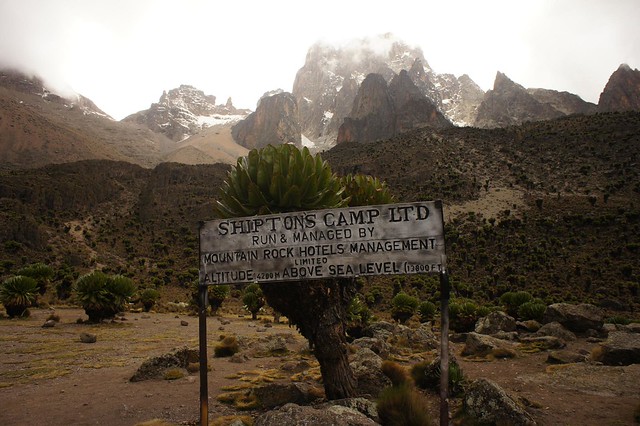
The highlands further west include the Mau escarpment, the Loita and Cherangani Hills and another old volcano, Mount Elgon, straddling the Ugandan border. With smaller national parks of rainforest – Saiwa Swamp, Kakamega Forest – these are all highly recommended objectives for keen hikers and naturalists.
Throughout the highlands, the lower slopes are intensively cultivated – these are Kenya’s farmlands. Around Mount Kenya and the Aberdare range much of this agriculture is the small-scale terracing of subsistence farmers, with patches of coffee and fruit grown for cash. The north side of Mount Kenya, however, has extensive wheat fields, and the southwest highlands are tea country – hundreds of square kilometres of trimmed, waxy-green tea bushes draped across the landscape. And everywhere you go, that supermarket favourite, the plastic greenhouse, is on the march, blocking the view with humid rearing sheds for string beans and cut flowers.
Sloping to the west, the highlands dip down to the Kenyan shores of Lake Victoria and a normally lush, rolling scene of farms, grasslands and sugar cane fields. Visit the area for intriguing islands of fossils and bird life, local cultural and historical sites and something called the “Obama trail” – Barack’s father grew up here, although apart from the odd sign, there’s nothing to indicate the fact.
Part three: the valley
Cutting through the middle of the highlands, the Kenyan portion of the Great Rift Valley (which stretches from Jordan to Mozambique) is a giant gash in the earth’s surface, dotted with jewel-like lakes and geothermal activity. Hot and dry, this is where you’ll see one of Kenya’s archetypal images, countless thousands of pink flamingos flocking in the algae-rich alkaline shallows of Lake Nakuru and Lake Bogoria. Lake Nakuru, securely fenced and bursting with wildlife, is also a fine place to see rhinos and leopards.
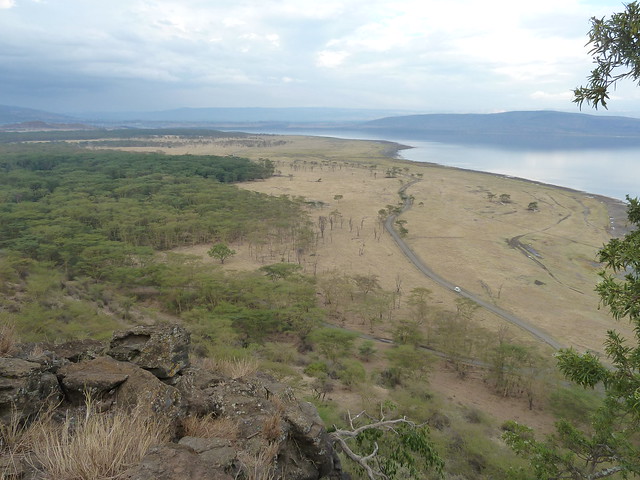
The two freshwater lakes, Naivasha and Baringo, are characterised by pods of snorting hippos, acacia woodland and amazingly rich birdlife. Both make wonderful places to camp – or relax in a bit more luxury – for a few days. In the far north, touching the Ethiopian border, lies the jade sickle of Lake Turkana, the largest desert lake in the world, with its often wildly attired Turkana, Samburu and Elmolo inhabitants and its enormous population of Nile Crocodiles.
Part four: the savannas
The part of Kenya that receives the most visitors is the southern savanna region. It’s a huge area, dominated culturally by Maasai herders and in natural terms by vast herds of migratory wildlife. In the southwest, the Mara river flows beneath the landmark Oloololo Escarpment through Kenya’s number one tourist attraction, the Maasai Mara National Reserve, location of one of the most vigorous and dramatic eco-systems in the world, where an annual migratory herd of more than a million wildebeest takes possession of the grasslands from July to October, surging west and south again and crossing the crocodile infested Mara river in a phenomenon of unforgettable, electrifying intensity. Although you can’t walk inside the reserve, the conservancies around it (there’s no fence) are community-run and game walks, cycling and horse-riding are all possible.
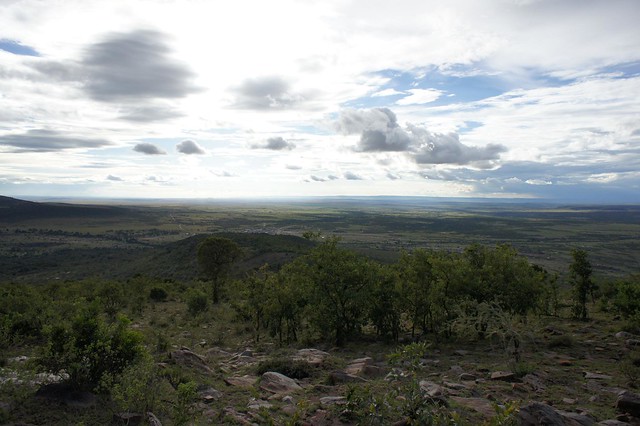
Southeast along the Tanzanian border, enclosing a clutch of lush swamps, lies the major elephant sanctuary of Amboseli National Park, beneath the snow-capped massif of Kilimanjaro. Further southeast, in the huge expanse of dry bush country shelving down to the coast, lies the duo of Tsavo West and Tsavo East national parks, together amounting to an area the size of Wales and including thousands of miles of tracks you can explore to your heart’s content. Don’t miss the wide, shallow Galana River in Tsavo East and the stunning oasis of Mzima Springs in Tsavo West.
Part five: the coast
The last part in the story of Kenya’s landscapes is the coast. In many ways a separate country, separated from the interior by a hundred-kilometre band of thorny desert, the coast was, until the early twentieth century, part of the Sultanate of Zanzibar, and was only married off to the Kenya Colony forty years before the country reclaimed its independence (some coastal people would say they exchanged the domination of Zanzibar for that of Nairobi). For such an effortlessly laid-back part of the world, the coast.
is surprisingly politicised, with a deep-seated Swahili culture that has been amalgamating interior languages and cultural norms with the laws and language of Islamic and Arabic culture for more than a thousand years. Seasonal trade winds – the northeast and southeast monsoons – play along a coast of beaches and creeks, protected by a coral reef.
The diving and snorkelling are excellent, the constant breeze encourage kite- and wind-surfing, and much of the coast lives up to tropical beach paradise expectations. True, there are some stretches of fairly intense hotel development near Mombasa, and at Malindi, but much of the coast is still relatively unspoiled – notably the Lamu archipelago, in the north, where the main island of Lamu still has no vehicles and some of the lesser islands are almost completely self-sufficient.
Safaris
So how does travel work in Kenya? What is a safari and how do you avoid being eaten by lions or squashed by an enraged elephant?
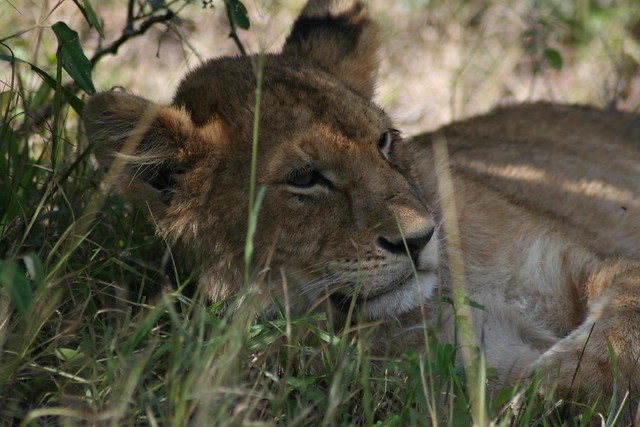
Think of the country, in one sense, like any other: you can travel without restriction all over Kenya, with the exception of parts of the northeast where travel is limited by Somalia’s insecurity and local banditry. Public transport or car hire will do the trick (and you can choose to have a driver/guide rather than doing the driving yourself, but either way you should hire a 4x4). In towns, you can stay overnight in hotels (there are very few campsites outside the parks), which don’t normally need to be booked ahead. If you’re driving a private vehicle, the parks are open to you, though you’ll need to book lodge or tented camp accommodation in advance (a tented camp is a permanent encampment of large tents, usually with floors, furniture, plumbed-in bathrooms and a separate roof for when the heavens open. Don’t forget park fees, which are payable per 24 hours, and usually range from $40 to $75 per day.
Rather than travelling independently, many visitors go on an organised safari – which just means journey in Swahili, so a safari is simply a tour. Most safaris concentrate on the national parks and will include “game drives” for several hours twice a day – after dawn and before dusk – when you leave your lodge or tented camp and set off in search of wildlife. In most of the parks, you can’t leave your vehicle – except of course in the camps, where spear-carrying watchmen look out for inquisitive wildlife – but some parks allow game walks, which gives you the chance to really absorb the natural environment in the company of trained rangers or local Maasai guides.
Kenya’s busiest tourist seasons are July and August and Christmas and New Year, when many lodges and camps are sold out and prices are highest. The best deals are to be had from April to June, during the so-called “long rains” (often a bit of a misnomer), when it sometimes feels as if you have half the country to yourself.
And the question of wildlife danger? The facts are: the wildlife is wild; most parks, and many lodges and camps, are unfenced; and wild animals and people don’t mix well, as a glance at virtually any daily paper will show, with marauding elephants, unseen crocodiles, surfacing hippos and goat-nabbing lions all regularly featured. You need to take care, as accidents do happen, but that’s what Kenya is all about. Guides and other staff will invariably protect you with great skill and devotion, but you can’t make a safari one hundred percent safe. And that’s why travelling here retains its emotional allure: the word exciting might apply to a theme park ride, but it doesn’t come close to describing the experience of travel in Kenya.

